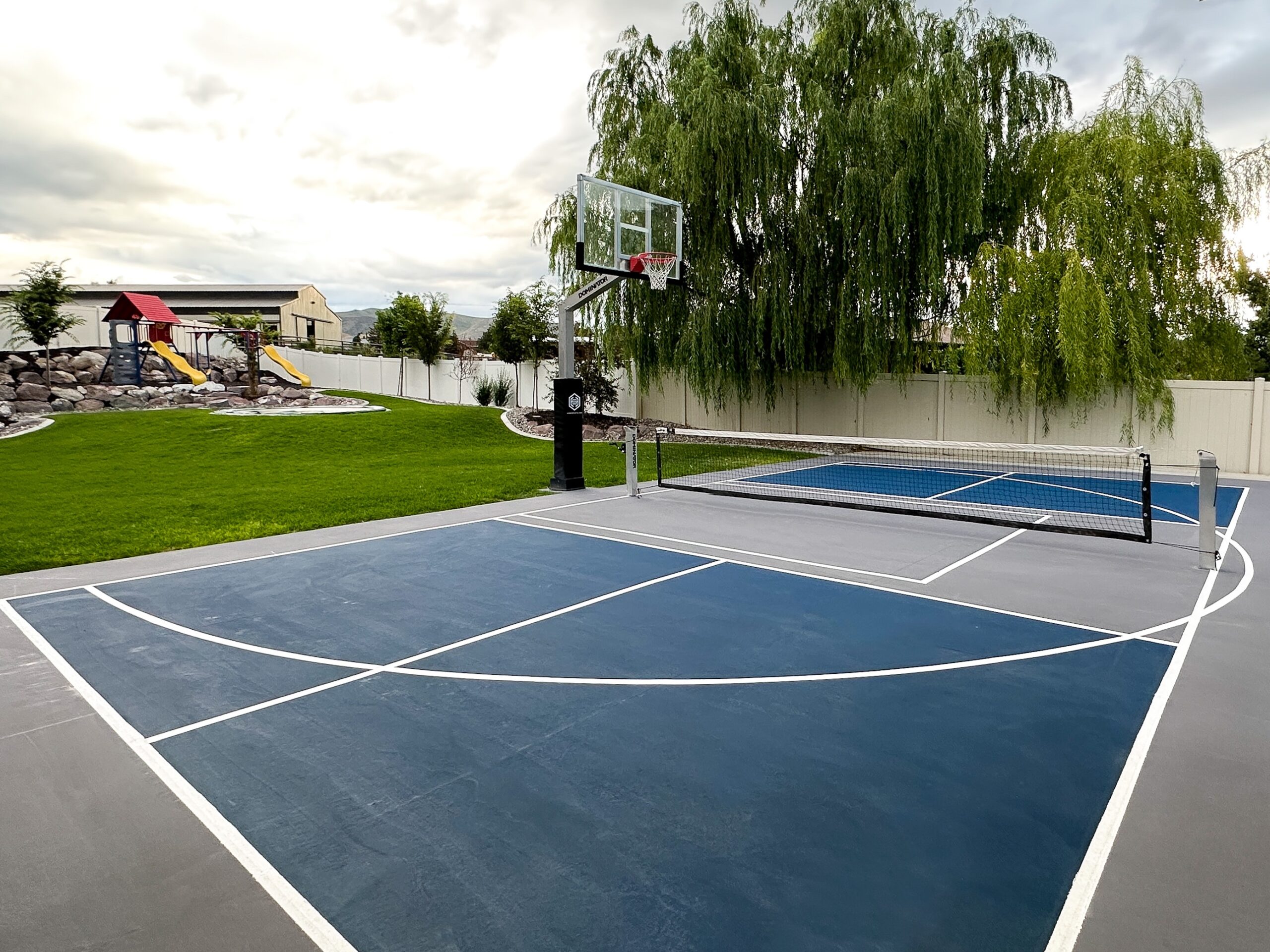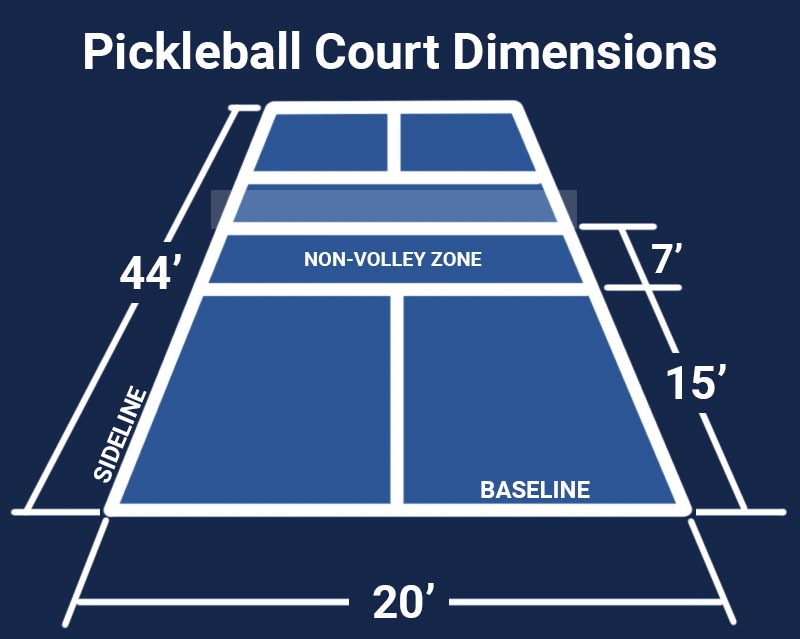Key Factors in the Building of Pickleball Judiciaries: From Site Selection to Final Coatings
The construction of pickleball courts includes an array of critical factors, starting with the option of an appropriate site that stabilizes availability with environmental considerations. Necessary components such as court dimensions, surface area products, and water drainage systems considerably impact not only the quality of play yet also the long life of the center.
Site Option Criteria
When starting the building of pickleball courts, it is vital to toenail down the website choice standards that will certainly make certain ideal playability and ease of access. The place needs to be easily reachable for gamers, preferably situated near houses or recreation center, to urge participation.
Moreover, the surface ought to be degree and steady, as irregular ground can cause safety and security hazards and influence gameplay. Sufficient drain is additionally vital; selecting a website with excellent water overflow will aid maintain court conditions during damaging weather condition.
An additional important factor to consider is the schedule of energies. Accessibility to power and water is required for lights and maintenance purposes. In addition, closeness to vehicle parking facilities is important, facilitating easy access for gamers and viewers alike.
Environmental factors can not be neglected; natural color from trees can improve gamer comfort, while exposure to dominating winds may disrupt play. Lastly, zoning policies and community assistance ought to be taken into consideration to guarantee that the job aligns with regional standards and gets the support it needs for effective implementation. By very carefully evaluating these standards, stakeholders can produce a welcoming and useful atmosphere for pickleball enthusiasts.
Court Capacities and Format
To guarantee ideal gameplay and adherence to laws, the dimensions and design of pickleball courts need to be carefully defined. A common pickleball court gauges 20 feet in size and 44 feet in length for both singles and doubles play. The suggested design consists of a non-volley area, generally described as the "kitchen," extending 7 feet from the net on either side. This area is important, as it affects gamer positioning and shot option - Illinois and midwest.
The net height is evaluated 36 inches at the sidelines and 34 inches at the facility, developing a mild dip that influences round trajectory. Court markings are just as vital; lines must be 2 inches large and unique in color to guarantee visibility.
Additionally, a barrier area bordering the court is a good idea, normally prolonging 5 to 10 feet past the sidelines and standards to fit players' movements and boost safety and security. Appropriate design and dimensions not just make sure conformity with official regulations yet additionally improve the overall having fun experience, fitting both recreational and affordable play. Cautious planning in these locations is extremely important to the successful construction of pickleball courts.
Surface Area Product Options
Selecting the appropriate surface area material for pickleball courts is critical for making sure ideal gamer efficiency and safety. The selection of surface can considerably influence gameplay, including ball bounce, grip, and player convenience.
There are several alternatives offered, each with its unique characteristics. Asphalt is a popular selection due to its resilience and reduced upkeep requirements. It gives a solid having fun surface area that can endure various weather condition conditions however may need regular resurfacing.
Concrete is another extensively used product, offering superb long life and a smooth surface. It enables constant ball bounce however can be hard on players' joints, making it much less desirable for long-lasting play without correct cushioning.
For those looking for improved convenience and shock absorption, supported acrylic surfaces provide a viable option. These surface areas combine a base layer with an acrylic overcoat, giving improved traction and a softer feel, which is valuable for decreasing the danger of injuries.
Last but not least, artificial turf is acquiring grip, specifically for multi-purpose centers. Its versatility and lower maintenance needs make it an appealing alternative, though it might not give the same ball reaction as standard tough courts. Careful consideration of these options will guarantee an optimal playing environment.
Drainage and Lighting Considerations
Appropriate drain and efficient lighting are vital elements in the building of pickleball courts, substantially influencing both playability and security. Sufficient drainage systems avoid water accumulation, Get More Information which can lead to slippery surface areas and damages to the court structure. A well-designed drainage strategy includes sloped surface areas and suitable materials to facilitate water move far from the playing area - Illinois and midwest. This not only maintains the honesty of the court however additionally minimizes downtime due to inadequate weather.
Lighting is similarly important, particularly for courts intended for evening usage. The placement of lights components need to be strategically planned to get rid of shadows and supply even circulation of light throughout the court.

Final Surfaces and Upkeep
After resolving water drainage and lighting considerations, attention turns to the final finishes and ongoing upkeep of pickleball courts. Illinois and midwest. The choice of surface material is vital, as it impacts both playability and longevity. Typical choices consist of acrylic finishings and specialized sporting activities surface areas that supply optimal grip and cushioning. These surfaces need to be applied in several layers to make certain durability versus weather aspects and wear.

Seasonal upkeep might consist of resurfacing every few years, depending upon use and environmental variables. Correctly keeping nets, court lines, and surrounding locations is equally essential to give a safe and satisfying having fun experience. By purchasing high quality coatings and adhering to a structured upkeep timetable, facility owners can guarantee their pickleball courts continue to be in excellent condition for many years ahead.
Conclusion
In final thought, the successful construction of pickleball courts pivots on careful interest to several key variables. Top quality surfaces and a robust upkeep routine are vital for preserving the court's problem, improving the overall experience for i loved this gamers and viewers alike.